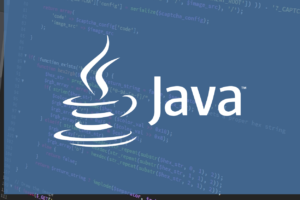When programmers create a Java program, it runs in an environment that includes your operating system, the Java Virtual Machine (JVM), and Java class libraries. Developers can configure different aspects of their program’s development environment from the command line.
This programming tutorial takes you through the different ways in which you can use and configure the Java environment on your system.
Reading: Top Java Online Training Courses and Bundles
Java Configuration Utilities
Below, we will examine several of the configuration utilities available in the Java Platform Environment.
Java Command Line Arguments
Developers can pass one or more arguments to the class of your program. Recall that your program’s main() function contains the String[] args array. If you have n arguments, you can access them by using args[0].. arg[n-1].
See the sample code below, which shows how to take in user input and then print it on the screen using Java:
class JavaArgs{ public static void main(String[] args) { if (args.length >= 1){ for(String item: args){ System.out.println(item); } } else{ System.out.println(“No input from user”); } } }
Java Environment Variables
Java environment variables are variables which are specific to your computing environment. For example, the home directory in which Linux user A exists is different from that of Linux user B.
In Linux, programmers can set an environment variable from the terminal, using the export command:
$ export MY_VARIABLE=value
To output the value of your variable, you can use the echo command:
$ echo $MY_VARIABLE
Developers can also use the printenv command to do print the value of a variable as well:
$printenv MY_VARIABLE
Notice that when using printenv, you do not need to include the $ symbol before the variable name.
It is important to note that variables you set from the terminal are temporary (ie they only last while your system is on).
To make these variables persistent, programmers need to define them in the .bashrc file. Note that this is a hidden file, so it will not show up when you search for it on your Linux system. The .bashrc file is located in your home directory.
You can add an environment variable in this file by simply adding a line with the export command as shown earlier.
Reading: Working with Java Variables
Java System Utilities
The following subsections discuss functionality that the System class provides in Java. This class is part of the java.lang package and it provides the following three streams in its static fields:
- in: The standard input stream (your keyboard)
- output: The standard output stream (the screen)
- err: The standard error stream
The in variable is an InputStream object, while the output and err variables are PrintStream objects.
Input/Output Objects
This section discusses how you can use the System I/O objects.
To output data on your screen, there are a number of methods that the out field provides, including:
Both of these methods can be used to display a numerical data type, a boolean value, a string, an array or even an object on your screen. These values are passed as an argument to these methods.
The difference between them is that println() terminates with a line separator while print() ends with the element in the stream.
To input user data from the screen, you can use the java.util.Scanner class. First, you need to create an object of this class:
Scanner input = new Scanner (System.in);
After creating an object of the java.util.Scanner class, you can use the nextXXX() method to capture data. XXX represents any of the following data types: Int, Long, Float, Double, or Boolean.
For example, to capture an integer value from the user using next() in Java, you would write the following code:
int a = input.nextInt();
To get a String value, simply use next().
Reading: Java Tools to Increase Productivity
Java System Properties
Java provides the Properties class to store configuration values for your particular environment as key/value pairs. This class is part of the java.util package and it extends the Hashtable class.
It is important for a developer to know your system properties because they can affect the kind of notation that you use in your Java programs. A good example would be the file separator.
In Windows, the file separator is a backslash (“”) , while in Linux it is a forward slash (“/”).
The getProperties() method of the System class allows programmers to check all the properties of your current environment. This method returns a Properties object.
As mentioned earlier, the Properties class uses the hashtable data structure. Therefore, you can use the hashtable methods to enumerate the key/value pairs.
The code example below, however, uses a simpler approach. It uses the toString() method to generate a comma separated list of key/value pairs:
import java.util.*; import java.io.*; class EnvProperties { public static void main(String[] args) throws Exception { Properties props = System.getProperties(); System.out.println(props.toString()); } }
Final Thoughts on the Java Platform Environment
This programming tutorial discussed how developers can use the System class, Properties class, and set environment variables in the Java Platform Environment. Notice that none of the examples in this tutorial instantiated the System class; This is because the Java API defines System as a final class. Therefore, you cannot create an instance of it.
Reading: Java Primitive Data Types
